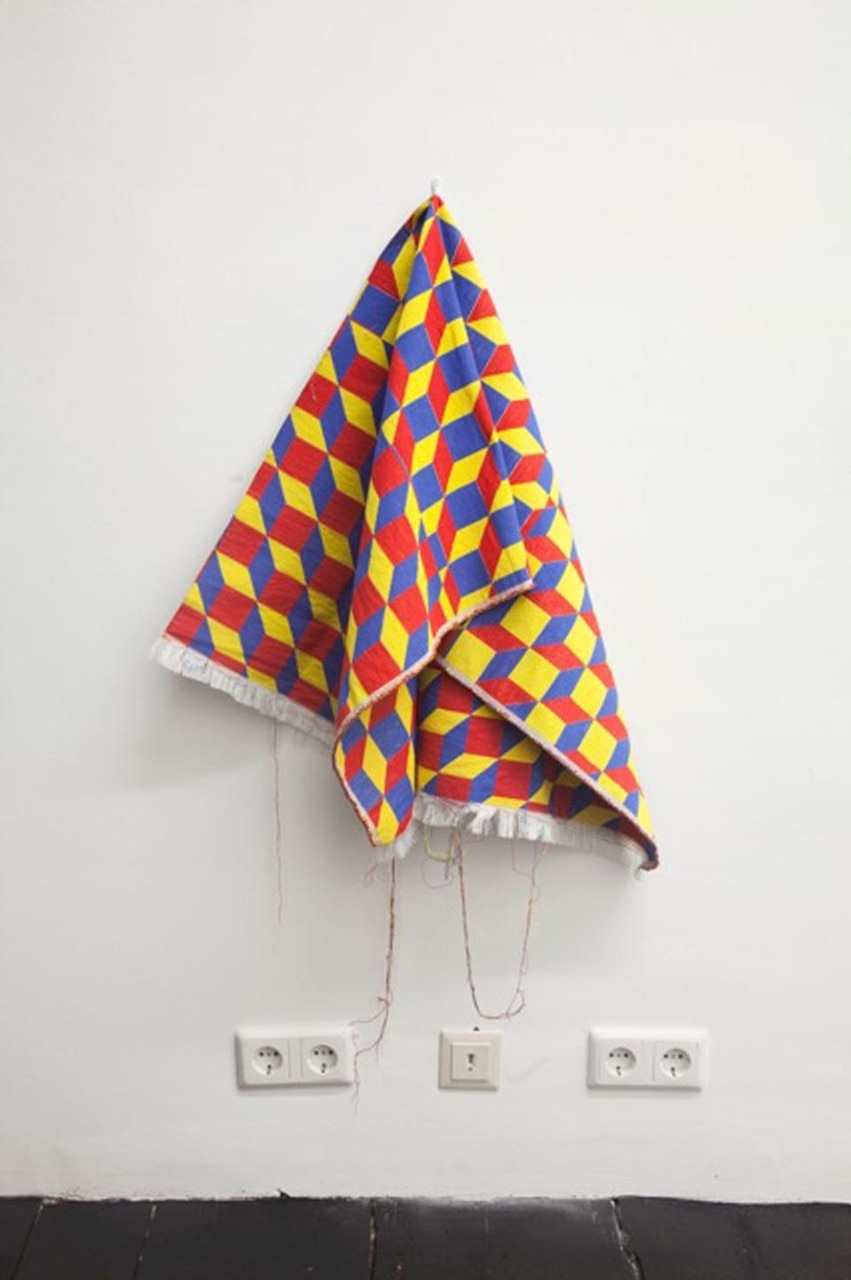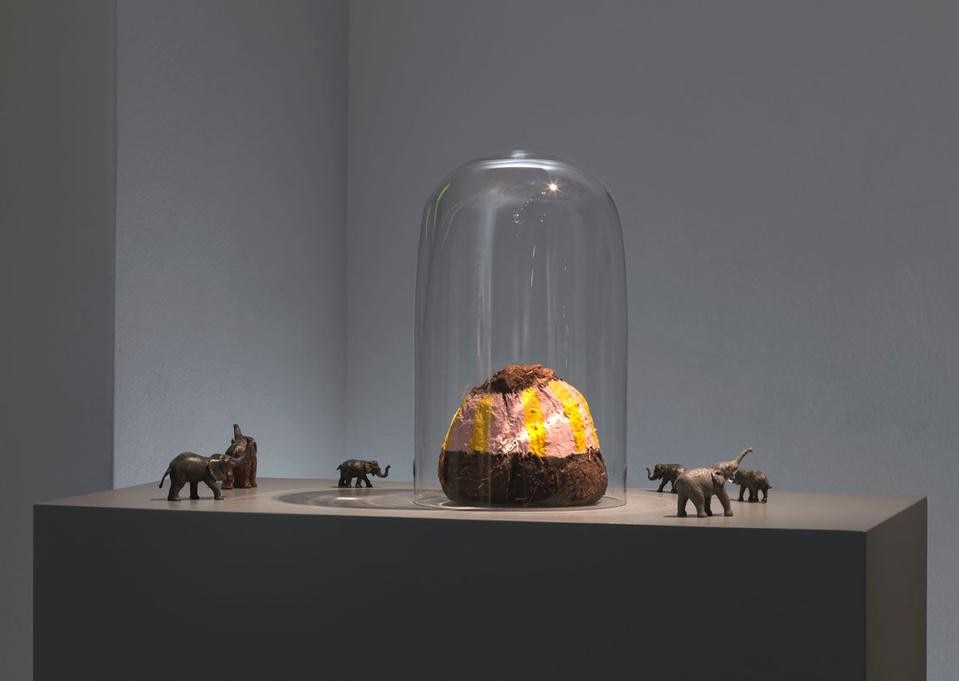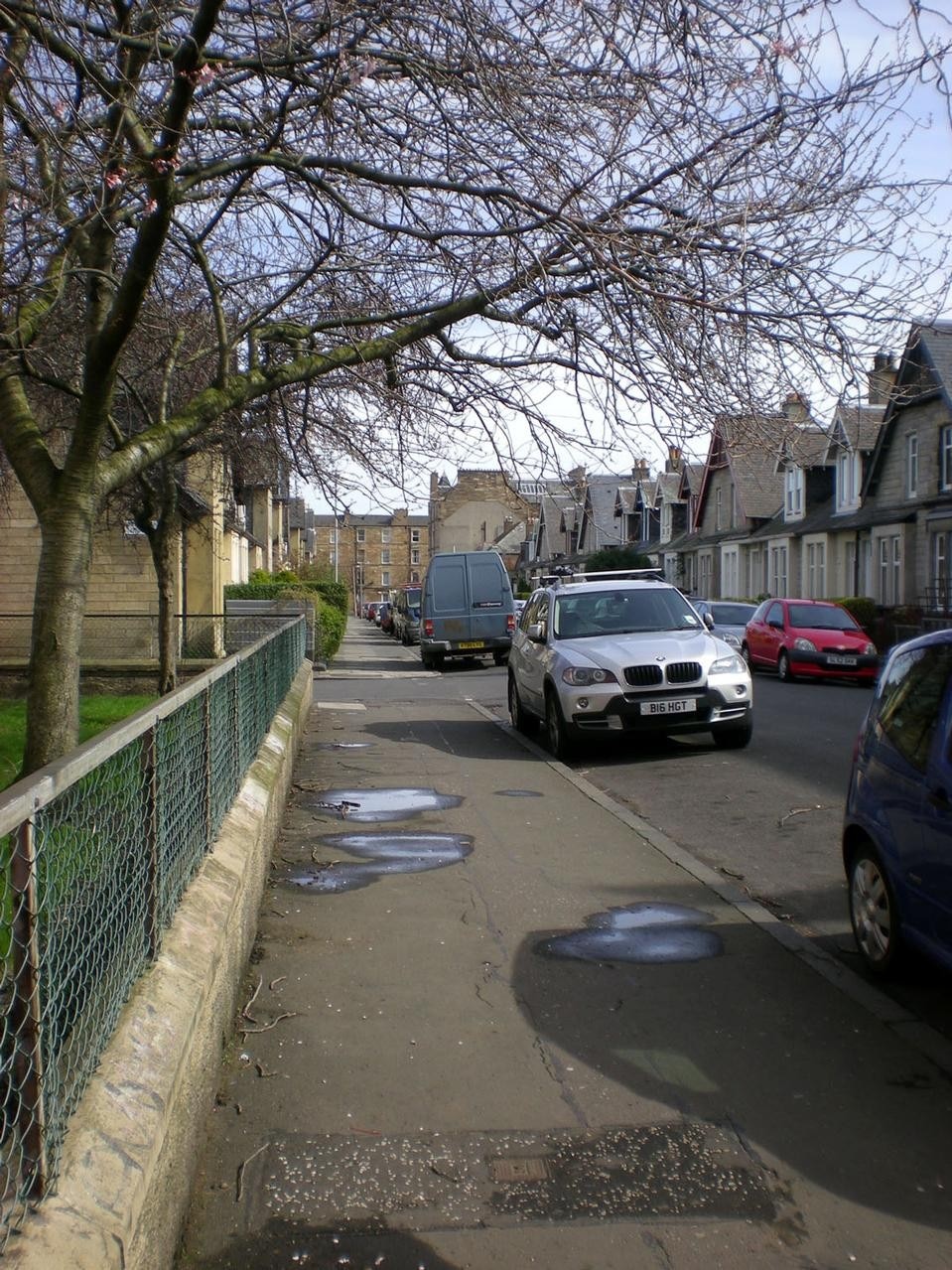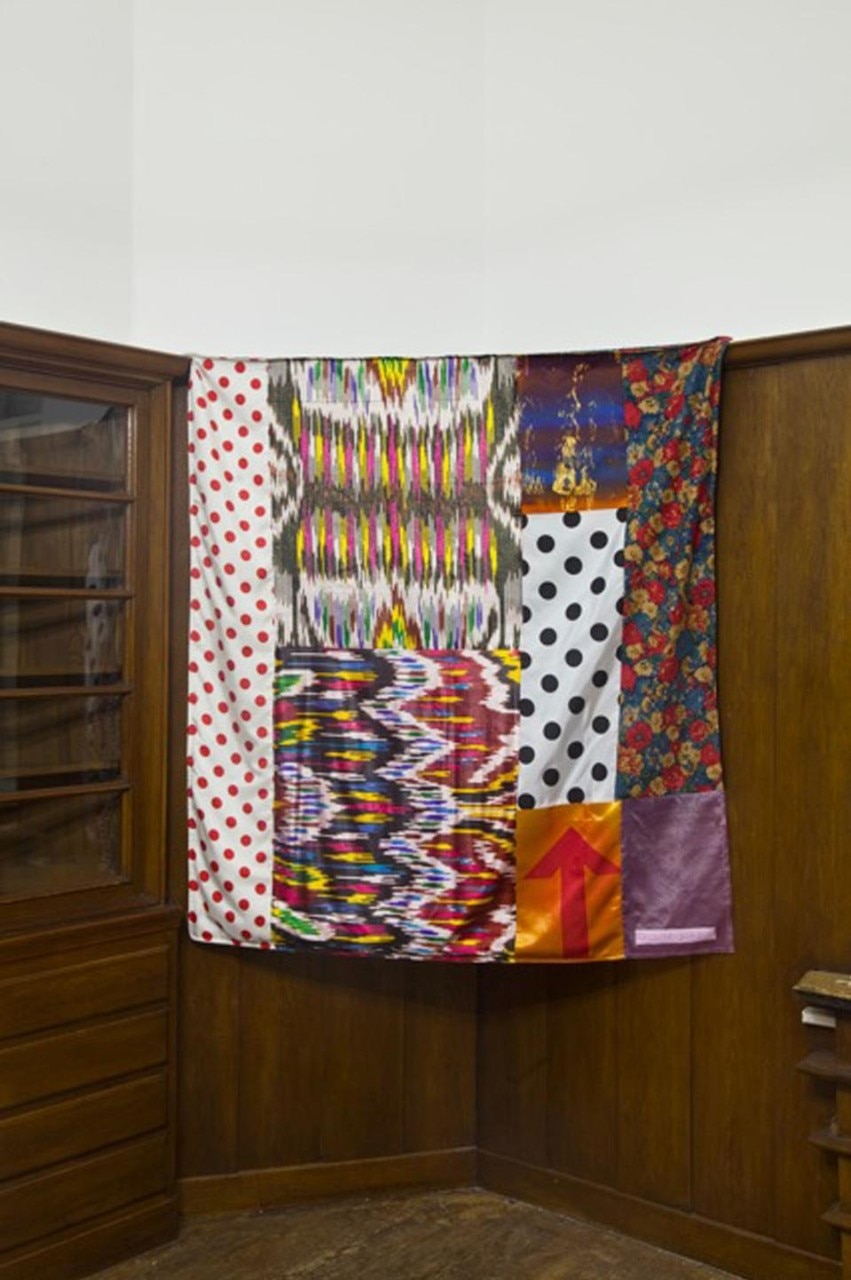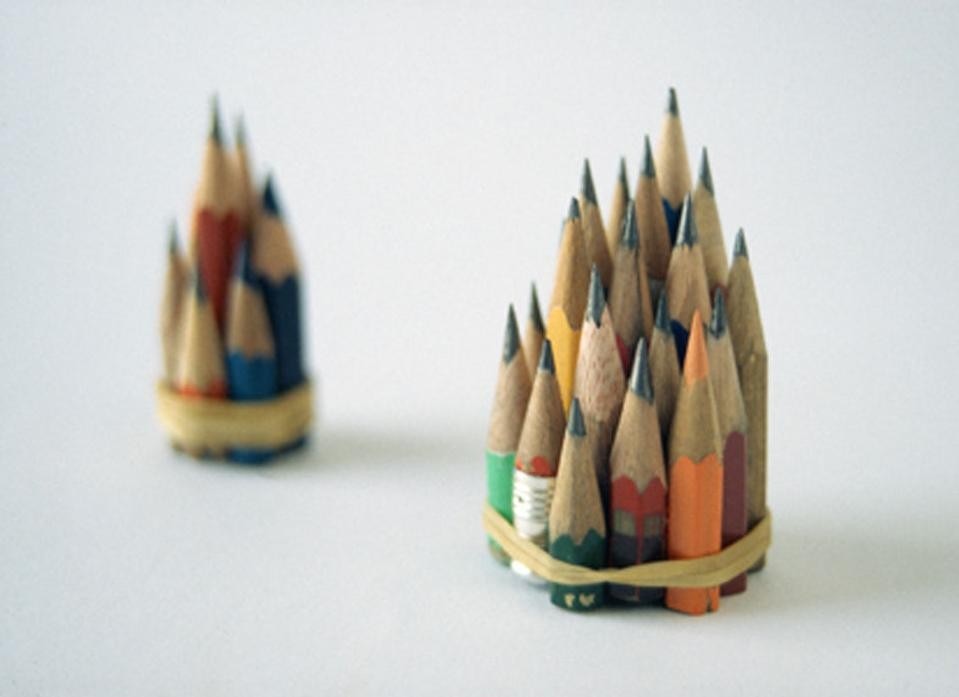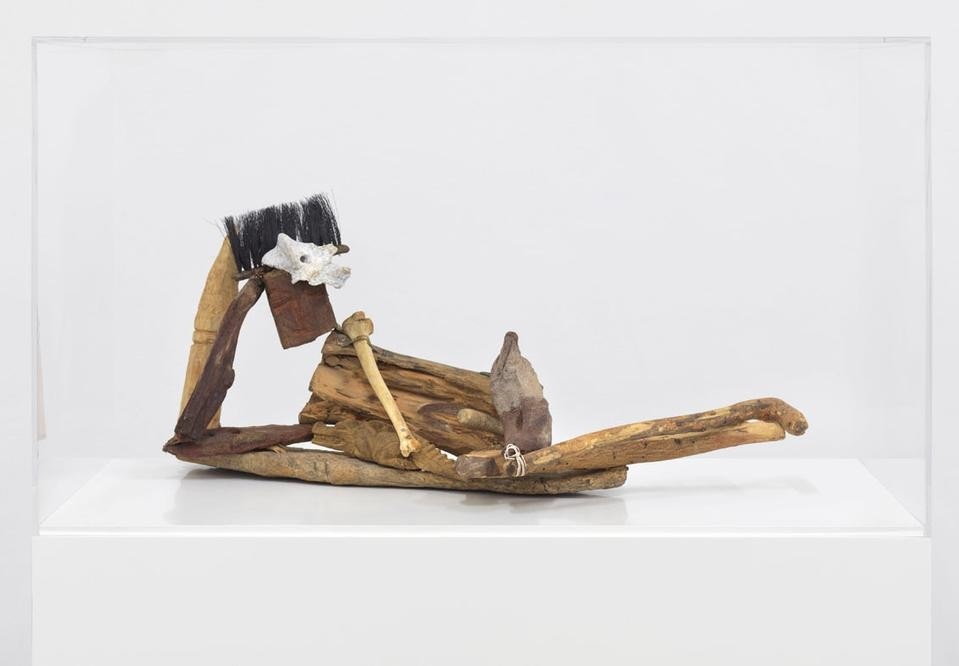Things, naturally, became more complicated: because some galleries chose, for gallery weekend, to host collective exhibitions (a collective within the collective?) and others organised in parallel Sunday, a real art fair for emerging galleries (a fair within the fair?) that in turn hosted a collective exhibition (in the fair, in the collective exhibition) entitled, understandably, Saturday. Three collective exhibitions however, were the real centre of interest of this weekend: three different ways to represent what is happening in art today, what’s new, what has been lost, what remains.
One could speak of history. “Lost and Found”, at the Neugerriemschneider gallery, offered an analytical slice of how much of contemporary art seeks to reflect on the problem of the past, on its documentation, on its lies: dig and dig and what do you find underneath? The layers of concrete of Pierre Huygue, the identifying root stereotyped and patched up by Danh Vo, the mysterious, iconic totem by David Hammons, a cake of elephant dung celebrated by a dancing ring of pachyderms. Then there is Jeremy Deller who analyses the remains of the gold rush, Franz Ackermann who shows dozens of doors, as if they lead somewhere: but no, they are football goals.
“Mehr Teppich” at the Isabella Bortolozzi gallery, is not built around content – the past – but form: playing on certain coincidences in the history of art, it brings together artists that range from Lucio Fontana to Kai Althoff, from Marco Bruzzone to Stefano Arienti, from David Hammons to Aldo Mondino, displaying only works that take the form of rugs. It is easy to exploit the commercial vocation of the galleries in order to be ironical about the sellers of rugs, but it is more difficult to exploit the rugs to construct an exhibition like this: rich and unexpected, halfway between the kunsthalle and the bazaar.
There is something else though. “The way we do art now”, curated by Pavel Büchler at the Tanya Leighton gallery, is a highly delicate reflection on gradual change, on how meaning is constructed via progressive shifts that lead to places far away from the original point. It includes artists both famous and obscure, at the beginning or at the end of their careers, offering overall a solid and homogeneous aesthetics, a single line of thought. Amikam Toren shows a sculpture made from three years of orange peel, dried after breakfast; Leo Fitzmaurice exhibits the progressive aging of a line of tin cans, that suffer time like people: slowly; Pavel Büchler shows uneven sculptures, made from leftovers of found pencils, borrowed, ours; Dean Hughes documents his decision to fill the puddles on the road home, even when it isn’t raining. The heart of the exhibition is a question of method, and contents, borrowed from Baldessari: "How do we do art today? What has changed since we stopped painting, sculpting, making art like we did before? What do we do now?"
"We fill puddles, even when it isn’t raining", it seems to summarise “The way we do art now”.
